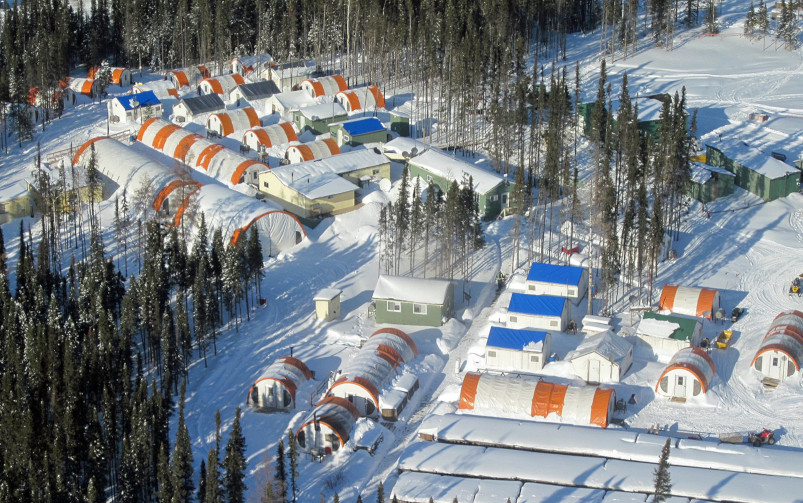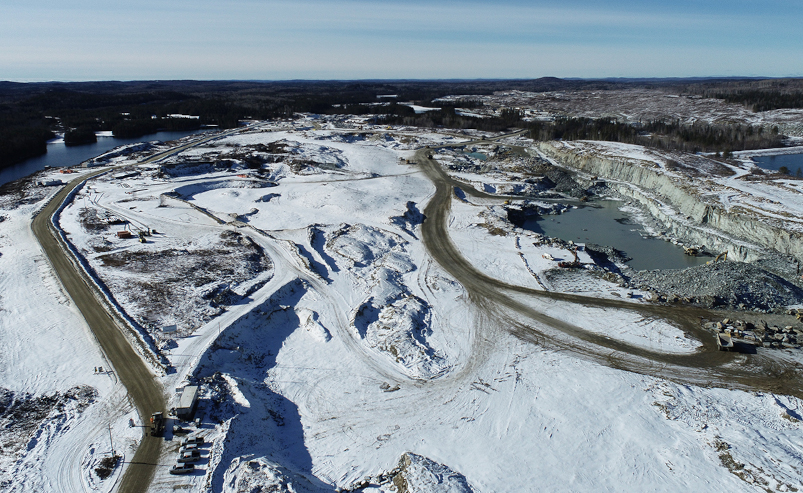Teck says its focus for the Fort Hills oil sands joint venture in the short term is to support its path to full production. Courtesy of Suncor.
Welcome back to your weekly mining news recap, where we catch you up on some of the news you may have missed. This week we have stories about divestments from oil by major investors, the advantages of reopening mines in a surging commodities market, and the green potential of small modular reactors. And lastly, CIM is moving next week. We’ll still be in the same building, just two floors down, at suite 1040.
USNC Power is looking to aid in the decarbonization of Canada’s northern mining projects, by replacing diesel power sources with small modular reactors (SMRs). The technology has the potential to provide a cleaner alternative source of power that emits no carbon dioxide, but USNC will have an uphill battle in terms of proving the technology’s safety and viability, as well as convincing the public that the construction of new nuclear reactors is a good idea.
Kinross Gold Corporation announced it has signed a definitive agreement with the Government of Mauritania to provide “enhanced certainty” on the economics of Kinross’ Tasiast mine located there, the Junior Mining Network reports. The agreement, which includes the continuation of tax exemptions on fuel duties for the company, the government’s repayment of approximately $40 million in outstanding VAT refunds, as well as the company’s payment of $10 million to the government over “disputed matters,” is the confirmation of an agreement in principle signed on June 15, 2020.
Sudbury, Ontario, will be the home base of the Mining Innovation Commercialization Accelerator (MICA), an initiative that will look to accelerate technological development and commercialization within the mining sector, the Sudbury Star reports. The $112.4 million project, of which $40 million comes through federal funding announced this week, was put together by the Sudbury-based Centre for Excellence in Mining Innovation (CEMI) and is expected to support the creation of 900 jobs and commercialize at least 30 new products.
A research team formed from Collège Boréal and Laurentian University academics has received a $270,850 grant from the Natural Sciences and Engineering Research Council of Canada to explore new methods of environmental restoration at abandoned aggregate pits in northeastern Ontario, Northern Ontario Business reports. The research team will be looking at replanting techniques and unique soil treatments to restore biodiversity and ecosystem functions, ultimately with the goal of “mak[ing] the aggregate-production and mining sectors more financially competitive and earn[ing] them stronger environmental and social licence to operate,” Boréal professor Marc Hébert said in a news release.
OceanaGold announced that the Philippines has renewed its contract for the Didipio gold and copper mine for another 25 years, Mining.com reports. The renewal applies retroactively from June 19, 2019, and Oceana has said it plans to restart the mine, which has been halted for two years due to a licensing dispute with a provincial government, “as soon as possible.” OceanaGold aims to achieve full underground production capacity within 12 months, with Didipio expected to generate about 10,000 ounces of gold and 1,000 tonnes of copper per month once production is fully ramped up.
AngloGold Ashanti submitted an offer to buy out the entire portfolio of Nevada gold assets of Corvus Gold, a company in which it already holds a 19.5 per cent indirect interest, Mining.com reports. The proposal follows the announcement by Corvus on May 6 that it had entered into a $20 million unsecured loan and guaranty agreement with AngloGold’s North American subsidiary. Christine Ramon, AngloGold’s interim CEO said, “The proposal is fully aligned to our strategy of growing ore reserve, building low-cost production and generating sustainable returns.”
So-called “zombie mines” are coming back to life, as surging metal prices are leading companies to re-open long-closed projects around the world, Bloomberg reports. Reviving old mines provides companies with the dual benefit of taking advantage of current market trends, while reducing costs by using existing infrastructure.
Diversified Canadian miner Teck Resources is rebalancing its portfolio towards copper, and is evaluating the fit of its oil-sands asset, Mining Weekly reports. Teck will be adjusting to take advantage of the growing demand for copper, which last year accounted for 27 per cent of its group revenue, while reducing its revenue from fossil fuels as a proportion of its total business. However, it will continue to produce the steelmaking coal Teck says is required for the low-carbon transition.
Up to $13.4 billion in Canadian oil-sands assets may be up for sale, as oil majors look to divest their oil assets in Western Canada, the Financial Post reports. According to Jeffrey Craig, an analyst at Veritas Investment Research Corp., “the pressure to cut emissions and invest in renewable energy” could lead “super majors to shed mostly upstream oil and gas assets to fund investments into renewables.” Those assets could be snapped up by likely candidates Canadian Natural Resources Ltd., Suncor Energy Inc., Cenovus Energy Inc. and Imperial Oil Ltd.
Some companies are seeing huge successes in switching to technologies that fall under the “industrial internet of things” (IIoT) label, Industry Week reports. Companies like Tomra, which makes sensor-based ore-sorting systems, and Baker Hughes, which creates protection- and condition-monitoring technology, not only report increases in efficiency at the installation sites, but contribute to the advancement of sustainable mining goals of the industry as a whole.
That’s all for this week! If you’ve got feedback, you can always reach us at editor@cim.org. If you’ve got something to add, why not join the conversation at our Facebook, Twitter or LinkedIn pages? Like your recap with a few more gifs? Check out our mining news recap stories on our Instagram.




